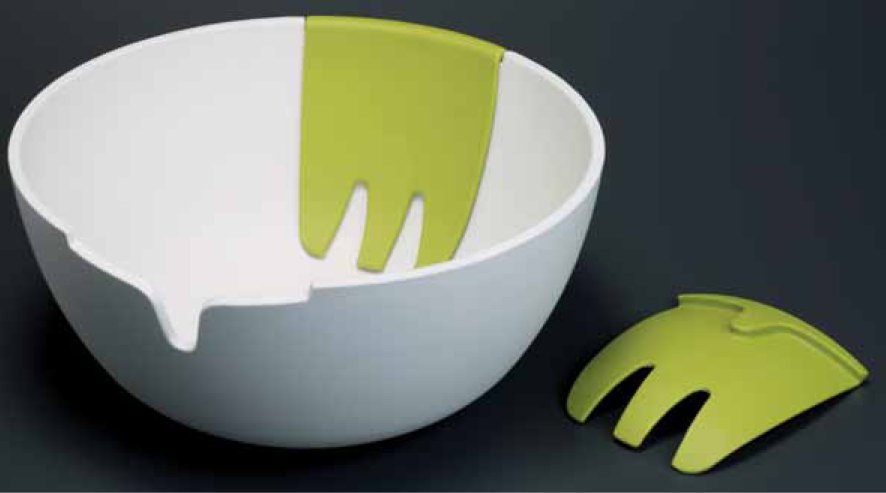Melamine Formaldehyde (aka Melamine)
Melamine occupies a unique place in the plastics family. Having been used since the 1930s it is one of the oldest commercially used plastics and still has no major replacement in relation to its use in plastic tableware. Just think of its bright colours, the hard, clanking sounds as bowls knock together and the stiffness and hardness that resembles ceramic. No other thermoplastic comes close to offering this same combination of characteristics.
Melamine is from the same thermoset family as urea and phenol formaldehyde. It offers an excellent surface finish with a much better ability to take colour, but it is generally more expensive. It imparts absolutely no smell or taste to food and feels hard, dense, rigid and unbreakable. The hard, shiny nonporous surface is part of the reason that it has long been a popular alternative to ceramics in the design of dishes, plates and bowls.
In the 1930s melamine compounds were an early replacement for Bakelite due to their ability to absorb and retain a range of colours. The 1950s were the heyday for moulded melamine when they were widely used for bright, multicoloured tableware products.
Image: Hands On™ salad bowl by Joseph and Joseph

Key features
•Excellent chemical resistance
•Excellent electrical insulation
•Easily coloured
•Excellent hardness
•Excellent stiffness
•High impact strength
•Food grade
•Easy to colour match
•Excellent dimensional stability
•Not recyclable
Sources
Widely available from multiple global suppliers.
Cost
Compared to other thermosets it is expensive: £1.20 ($1.90) per kg.
Sustainability issues
As with all thermosets, melamine cannot be remelted and remoulded.
Production
Melamine is available as a compound and a resin and so can be injection moulded, compression moulded and extruded. Unlike many thermoplastics it can be moulded with variable wall thickness.
Its heat resistance makes it the perfect material for ashtrays, handles for cooking pots, fan housings, circuit breakers, coat buttons, dinnerware and plastic laminates. Its excellent hardness and chemical resistance make it scratch resistance and stain free, ideal for kitchen worktops and moulded kitchen utensils.
| + | – |
|
–Good resistance to chemicals, impact and heat –Non-toxic –Excellent surface finish –Takes colour well |
–Relatively expensive –Cannot be recycled |
